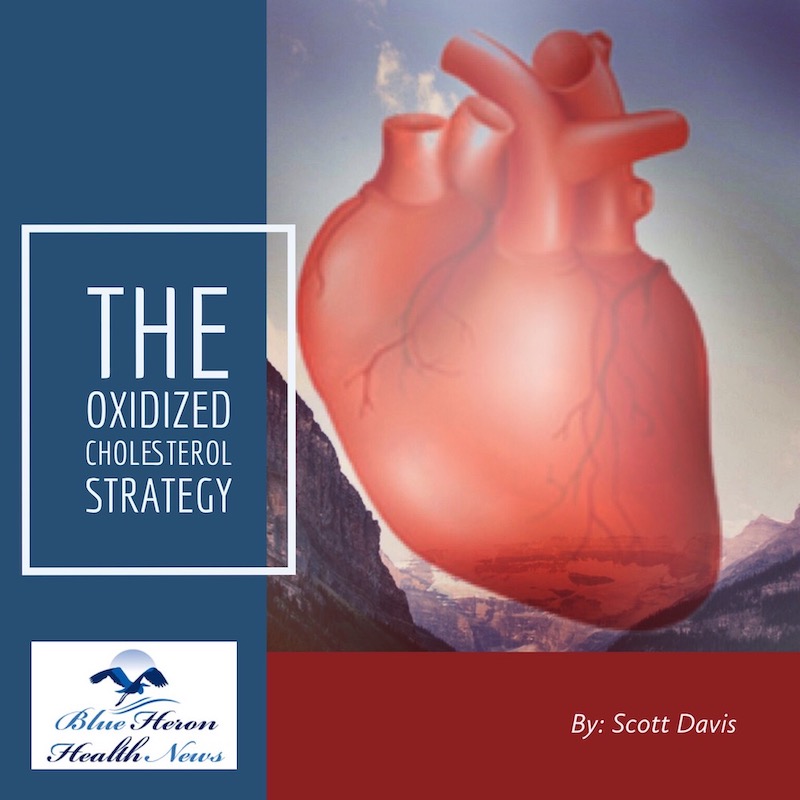
The Oxidized Cholesterol Strategy™ By Scott Davis The Oxidized Cholesterol Strategy is a well-researched program that reveals little known secret on how to tackle cholesterol plaque. This program will tell you step by step instructions on what you need to completely clean plaque buildup in your arteries so as to drop your cholesterol to healthy level.
How does oxidized cholesterol affect LDL particles?
How Oxidized Cholesterol Affects LDL Particles
Oxidized cholesterol, particularly oxidized low-density lipoprotein (oxLDL), has several detrimental effects on LDL particles that contribute to the development of atherosclerosis and cardiovascular diseases. Here’s an in-depth exploration of these effects, supported by multiple sources:
1. Structural Alterations of LDL Particles
Lipid Peroxidation:
- Oxidized cholesterol leads to the peroxidation of lipids within LDL particles. This process generates reactive aldehydes and other oxidative products that alter the lipid composition of LDL.
Protein Modification:
- Oxidation of LDL also affects its protein component, apolipoprotein B-100 (apoB-100). These modifications can include cross-linking, fragmentation, and formation of advanced glycation end products (AGEs), which change the structural and functional properties of LDL particles.
Sources:
- Journal of Lipid Research Lipid Peroxidation in LDL
- Arteriosclerosis, Thrombosis, and Vascular Biology Protein Modification in OxLDL
2. Increased Atherogenicity
Enhanced Uptake by Macrophages:
- Modified LDL particles are more readily recognized and taken up by macrophages via scavenger receptors, such as CD36 and SR-A. This uptake leads to the formation of foam cells, a hallmark of early atherosclerotic lesions.
Sources:
- Nature Medicine Macrophage Uptake of OxLDL
- Journal of Clinical Investigation Foam Cell Formation
Promotion of Inflammatory Responses:
- OxLDL particles stimulate the production of pro-inflammatory cytokines, such as tumor necrosis factor-alpha (TNF-α) and interleukin-6 (IL-6), by endothelial cells, smooth muscle cells, and macrophages. This inflammatory milieu exacerbates the development of atherosclerotic plaques.
Sources:
- American Journal of Pathology Inflammation and Atherosclerosis
- Circulation Research Inflammatory Response to OxLDL
3. Impairment of Endothelial Function
Endothelial Cell Activation:
- OxLDL induces the expression of adhesion molecules (e.g., VCAM-1, ICAM-1) on endothelial cells, facilitating the adhesion and migration of monocytes into the subendothelial space.
Endothelial Dysfunction:
- The presence of oxLDL reduces the bioavailability of nitric oxide (NO) by increasing oxidative stress, leading to endothelial dysfunction. This impairs the endothelium’s ability to regulate vascular tone and maintain a barrier against lipid infiltration.
Sources:
- Journal of Clinical Investigation OxLDL and Endothelial Cells
- European Heart Journal Endothelial Dysfunction
4. Plaque Stability and Thrombosis
Plaque Formation:
- The accumulation of foam cells and extracellular lipid in the arterial intima leads to the formation of a lipid-rich necrotic core, contributing to the growth and progression of atherosclerotic plaques.
Plaque Instability:
- OxLDL contributes to the weakening of the fibrous cap of plaques by stimulating the secretion of matrix metalloproteinases (MMPs) by macrophages and smooth muscle cells. This increases the risk of plaque rupture and subsequent thrombus formation.
Sources:
- Nature Reviews Cardiology Plaque Instability
- Journal of the American College of Cardiology Thrombosis in Atherosclerosis
Conclusion
Oxidized cholesterol significantly impacts LDL particles by inducing structural alterations, increasing atherogenicity, impairing endothelial function, and contributing to plaque instability and thrombosis. These changes play a crucial role in the development and progression of atherosclerosis, emphasizing the importance of managing oxidative stress and cholesterol levels to prevent cardiovascular diseases.
References
- Journal of Lipid Research: Lipid Peroxidation in LDL
- Arteriosclerosis, Thrombosis, and Vascular Biology: Protein Modification in OxLDL
- Nature Medicine: Macrophage Uptake of OxLDL
- Journal of Clinical Investigation: Foam Cell Formation
- American Journal of Pathology: Inflammation and Atherosclerosis
- Circulation Research: Inflammatory Response to OxLDL
- Journal of Clinical Investigation: OxLDL and Endothelial Cells
- European Heart Journal: Endothelial Dysfunction
- Nature Reviews Cardiology: Plaque Instability
- Journal of the American College of Cardiology: Thrombosis in Atherosclerosis
The Oxidized Cholesterol Strategy™ By Scott Davis The Oxidized Cholesterol Strategy is a well-researched program that reveals little known secret on how to tackle cholesterol plaque. This program will tell you step by step instructions on what you need to completely clean plaque buildup in your arteries so as to drop your cholesterol to healthy level.
